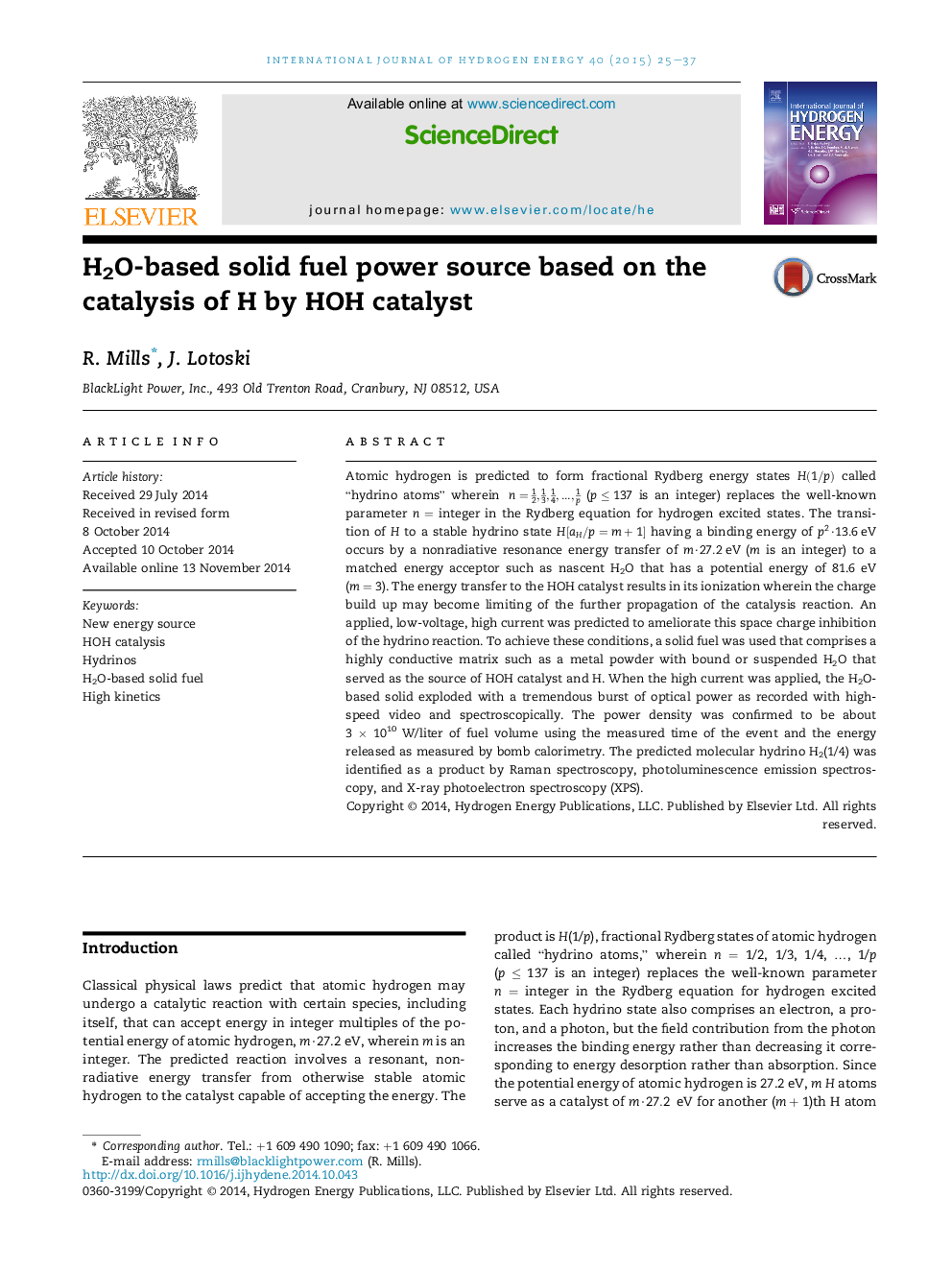| Article ID | Journal | Published Year | Pages | File Type |
|---|---|---|---|---|
| 7716590 | International Journal of Hydrogen Energy | 2015 | 13 Pages |
Abstract
Atomic hydrogen is predicted to form fractional Rydberg energy states H(1/p) called “hydrino atoms” wherein n=12,13,14,...,1p (pâ¤137 is an integer) replaces the well-known parameter n = integer in the Rydberg equation for hydrogen excited states. The transition of H to a stable hydrino state H[aH/p=m+1] having a binding energy of p2·13.6eV occurs by a nonradiative resonance energy transfer of m·27.2eV (m is an integer) to a matched energy acceptor such as nascent H2O that has a potential energy of 81.6 eV (m = 3). The energy transfer to the HOH catalyst results in its ionization wherein the charge build up may become limiting of the further propagation of the catalysis reaction. An applied, low-voltage, high current was predicted to ameliorate this space charge inhibition of the hydrino reaction. To achieve these conditions, a solid fuel was used that comprises a highly conductive matrix such as a metal powder with bound or suspended H2O that served as the source of HOH catalyst and H. When the high current was applied, the H2O-based solid exploded with a tremendous burst of optical power as recorded with high-speed video and spectroscopically. The power density was confirmed to be about 3 Ã 1010 W/liter of fuel volume using the measured time of the event and the energy released as measured by bomb calorimetry. The predicted molecular hydrino H2(1/4) was identified as a product by Raman spectroscopy, photoluminescence emission spectroscopy, and X-ray photoelectron spectroscopy (XPS).
Related Topics
Physical Sciences and Engineering
Chemistry
Electrochemistry
Authors
R. Mills, J. Lotoski,
